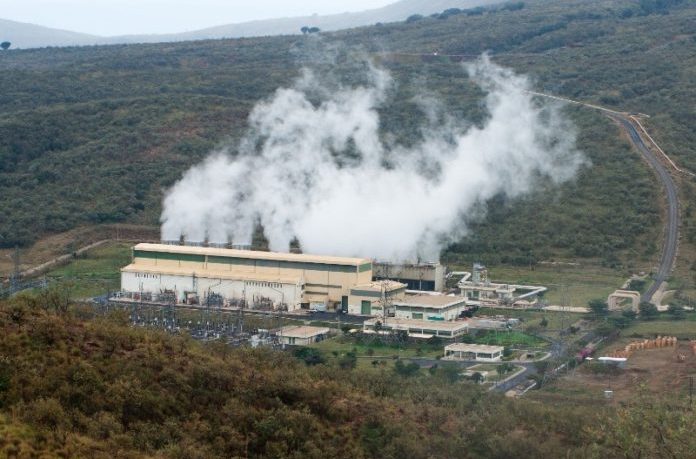- The Kenya Electricity Generating Company’s (KenGen) 83MW Olkaria 1 unit 6 Geothermal Plant is nearly complete and is expected to be added to the grid in early 2022.
Kenya Electricity Generating Company (KenGen) Chief Executive Officer Rebecca Miano said once the plant is operational, it will help drive down the cost of electricity in Kenya by displacing thermal energy while meeting the country’s growing demand for electricity.
Miano reiterated that the plant would help support the government’s effort to achieve 100% utilisation of renewable energy by the year 2030 as a way of fighting climate change.
Related news: Kengen drill first of three geothermal wells in Djibouti
She added that about 86% of KenGen’s installed capacity of 1,818MW comes from renewable and clean energy sources, namely hydro, geothermal and wind.
While speaking during a visit to Olkaria to inspect and assess KenGen’s geothermal power facilities, Energy Cabinet Secretary Monica Juma noted that KenGen’s shift to renewable energy would help attract foreign investments in Kenya’s energy sector.
She further noted that the government was working to ensure all Kenyans use clean cooking by 2028.
“We are committed to fast-track the deployment of renewable energy as a driver for economic development in the country… My visit to Olkaria comes a month after the conclusion of the COP26 conference where Kenya was a global reference point in the field of renewable energy,” she said.
He noted that renewable energy currently accounts for 73% of Kenya’s installed power generation capacity while 90% of electricity in use is from green sources among them geothermal, wind, solar and hydro-electric installations.
“… the energy sector accounts for three-quarters of greenhouse gas emissions. The critical challenge, therefore, is how to reduce carbon emissions from the energy sector while ensuring that all people have access to clean energy.,” Kenyatta said.
“We are on course to achieve our target of 100% use of clean energy by 2030 and to achieve 100% access to clean cooking by 2028,” he added
Author: Nomvuyo Tena
Nomvuyo Tena is a Content Producer at Clarion Events Africa and is as passionate about the energy transition in Africa as she is about music and Beyonce.
This article was originally published on ESI Africa and is republished with permission with minor editorial changes.

















